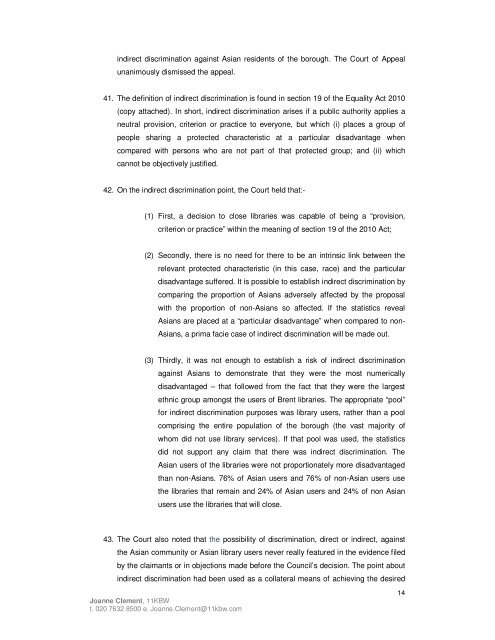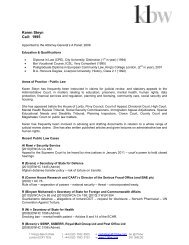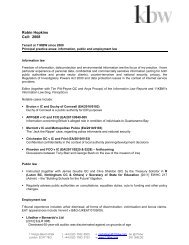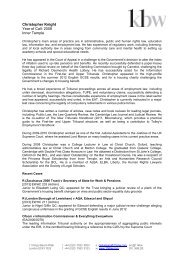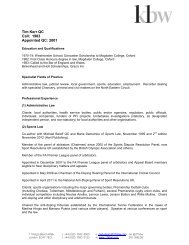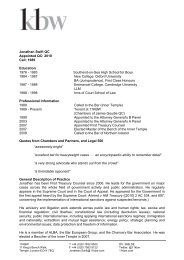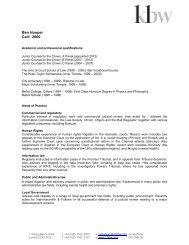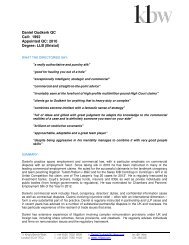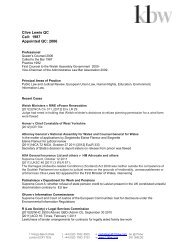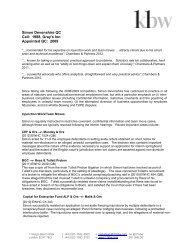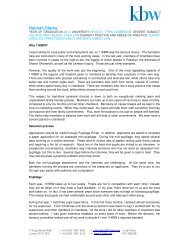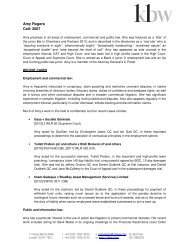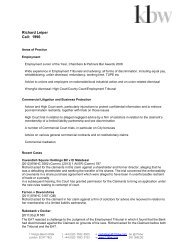THE PUBLIC SECTOR EQUALITY DUTY Joanne Clement - 11kbw
THE PUBLIC SECTOR EQUALITY DUTY Joanne Clement - 11kbw
THE PUBLIC SECTOR EQUALITY DUTY Joanne Clement - 11kbw
Create successful ePaper yourself
Turn your PDF publications into a flip-book with our unique Google optimized e-Paper software.
indirect discrimination against Asian residents of the borough. The Court of Appeal<br />
unanimously dismissed the appeal.<br />
41. The definition of indirect discrimination is found in section 19 of the Equality Act 2010<br />
(copy attached). In short, indirect discrimination arises if a public authority applies a<br />
neutral provision, criterion or practice to everyone, but which (i) places a group of<br />
people sharing a protected characteristic at a particular disadvantage when<br />
compared with persons who are not part of that protected group; and (ii) which<br />
cannot be objectively justified.<br />
42. On the indirect discrimination point, the Court held that:-<br />
(1) First, a decision to close libraries was capable of being a “provision,<br />
criterion or practice” within the meaning of section 19 of the 2010 Act;<br />
(2) Secondly, there is no need for there to be an intrinsic link between the<br />
relevant protected characteristic (in this case, race) and the particular<br />
disadvantage suffered. It is possible to establish indirect discrimination by<br />
comparing the proportion of Asians adversely affected by the proposal<br />
with the proportion of non-Asians so affected. If the statistics reveal<br />
Asians are placed at a “particular disadvantage” when compared to non-<br />
Asians, a prima facie case of indirect discrimination will be made out.<br />
(3) Thirdly, it was not enough to establish a risk of indirect discrimination<br />
against Asians to demonstrate that they were the most numerically<br />
disadvantaged – that followed from the fact that they were the largest<br />
ethnic group amongst the users of Brent libraries. The appropriate “pool”<br />
for indirect discrimination purposes was library users, rather than a pool<br />
comprising the entire population of the borough (the vast majority of<br />
whom did not use library services). If that pool was used, the statistics<br />
did not support any claim that there was indirect discrimination. The<br />
Asian users of the libraries were not proportionately more disadvantaged<br />
than non-Asians. 76% of Asian users and 76% of non-Asian users use<br />
the libraries that remain and 24% of Asian users and 24% of non Asian<br />
users use the libraries that will close.<br />
43. The Court also noted that the possibility of discrimination, direct or indirect, against<br />
the Asian community or Asian library users never really featured in the evidence filed<br />
by the claimants or in objections made before the Council’s decision. The point about<br />
indirect discrimination had been used as a collateral means of achieving the desired<br />
<strong>Joanne</strong> <strong>Clement</strong>, 11KBW<br />
t. 020 7632 8500 e. <strong>Joanne</strong>.<strong>Clement</strong>@<strong>11kbw</strong>.com<br />
14


